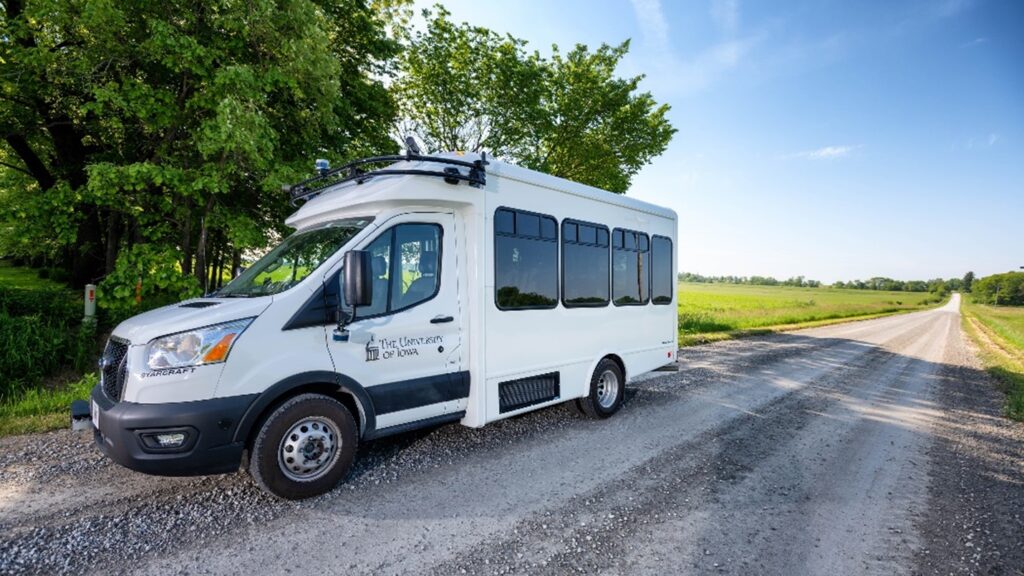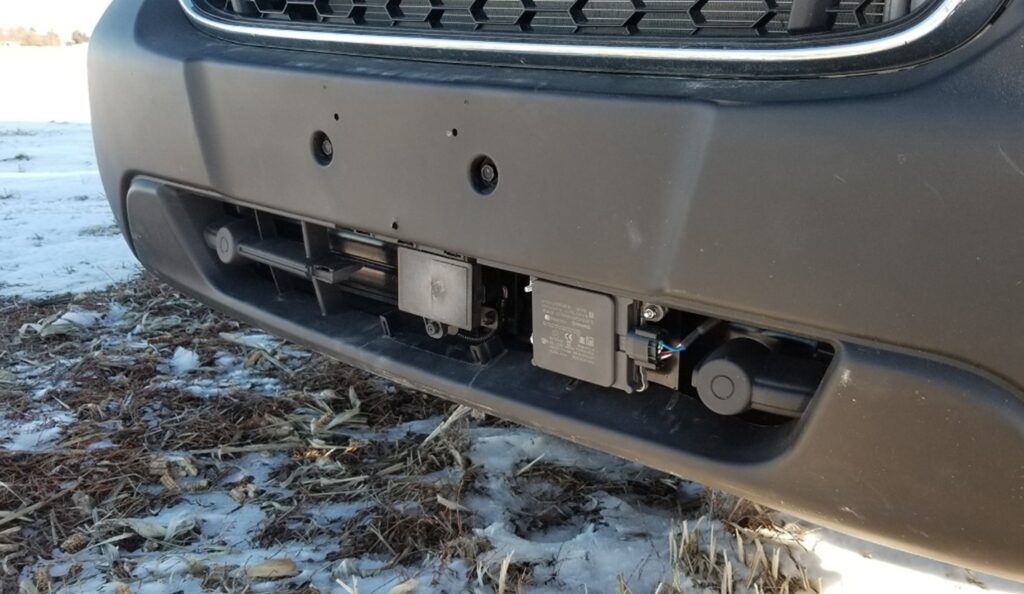“While 19% of Americans live in rural areas, nearly 50% of traffic fatalities occur on rural roads.” This quote, from a September 2022 report from the Governors Highway Safety Association,[i] is found on the homepage of the Automated Driving Systems (ADS) for Rural America website. Traffic safety is an ongoing policy discussion, with NHTSA estimates pointing to an excess of 31,000 deaths in crashes during the first 9 months of 2022—and the largest increases relative to 2021 on rural interstates.[ii] Automated vehicle (AV) technology is in its early stages, but its future lifesaving and life-improving potential could be considerable, particularly for rural residents who are often farther from needed facilities and may be mobility limited by health or resources.[iii]
The factors which increase the danger of rural driving—unpaved or unclearly marked roads, sharp turns or limited visibility, and obstructions by animal crossings or weather—are those least present in training data largely gathered in urban areas. The need for training data on rural roadways gave ADS for Rural America its purpose. The U.S. DOT-funded project is run by a team at the University of Iowa’s Driving Safety Research Institute, who have previous experience collaborating with the Iowa DOT. Their wheelchair accessible Ford Transit shuttle bus, seen in Figure 18, is outfitted with eight different types of sensors, cameras, and scanners provided by tech partners. This AV follows a 47-mile predetermined route with a safety driver capable of instantly taking control when needed, as well as a co-pilot. Informed volunteers of sufficient age or with disabilities have been recruited to ride along.[iv]

The ADS for Rural America automated shuttle on a gravel road within the project route. Source: University of Iowa, 2021
Project Purpose
If AVs are to collect the data needed to improve their rural performance, projects like ADS for Rural America require both resources to outfit vehicles with sensory equipment and community acceptance to enable. The shuttle is operated on public roadways with traffic around it—a necessity to gather data on various road types and in real-world traffic conditions—and any safety incident could see community members protest its presence. Safety and transparency have been made cornerstones of the project, with a comprehensive safety plan made available to government partners and interested parties on request. Safety and operational information have similarly been shared with similar out-of-state projects, such as the Ohio DOT’s DriveOhio.[v]
The project’s data portal reports a total of 3,027 miles driven, of which 2,459 (81%) were automated. These drives have included 108 ride-along passengers and sensor detection of over 860,000 obstacles.[vi] The most notable lesson learned from this testing has been the vulnerability of highly interconnected systems, where a system might continue to operate when another system essential to its proper functioning has failed. A specific incident described involved the formation of ice on the LiDAR sensor while driving in freezing rain, causing the systems to erroneously report no traffic around it.[vii] The potential for hardware or software to malfunction, possibly without prompt warning, warrants an on-site team trained in troubleshooting. The presence of the safety drivers and a comprehensive approach to training and safety are central, with the ADS for Rural America team issuing a warning to consider the technology’s potential and the potential to overestimate its present sophistication.
Outcomes
There are a number of AV systems available for research and development platforms, with ADS for Rural America having selected based on its needs, resources, and safety concerns.[viii] The vehicle’s Platform Actuation and Control Module (PACMod) 3.0 System is designed to resume manual control with a single step, as easily as ending cruise control, with an auditory alert communicating PACMod failure. Its sensory equipment as used by ADS for Rural America includes GPS and DSRC antennae, a traffic light camera, LiDAR, webcam, collision avoidance, a transmitter for road data and weather, and a long-range radar to detect objects front and rear.[ix] Long-range radar and other sensors are visible in Figure 19. A fully equipped AV shuttle represents an investment for a community, research team, or organization, highlighting the importance of collaboration and pursuing grants or other funding opportunities. The ADS for Rural America team shares its own safety plan, but any organization conducting AV testing should consider its unique needs and ensure its ever-present team is trained in system troubleshooting and safely assuming control as needed.

The ADS for Rural America automated shuttle over light snow, with the long-range radar visible. Source: University of Iowa, 2021
Presently, the most rapid advancements are occurring on the individual sensor level, with each breakthrough allowing LiDAR to do more at less cost.[x] This will simplify future rural testing, but only the collection of additional data will allow technologies to communicate with each other and account for roadway-specific variances. AV technologies are built around global standards, and a sensor that can detect snow may not yet know to change its behavior as a driving human would. Communities interested in conducting rural testing should keep abreast of changing sensor efficacy and recognize the urgent need for investment in training.
More information can be found at the project’s website, https://adsforruralamerica.uiowa.edu.
[i] Raymond, P. (2022). “America’s Rural Roads: Beautiful and Deadly.” Governors Highway Safety Association, https://www.ghsa.org/resources/GHSA/Rural-Road-Safety22
[ii] National Highway Traffic Safety Administration. (2023). “NHTSA Estimates for First Nine Months of 2022 Suggest Roadway Fatalities Beginning to Level Off After Two Years of Dramatic Increases.” https://www.nhtsa.gov/press-releases/nhtsa-estimates-traffic-deaths-2022-third-quarter
[iii] National Highway Traffic Safety Administration. (2023). “Automated Vehicles for Safety.” https://www.nhtsa.gov/technology-innovation/automated-vehicles-safety
[iv] ADS for Rural America: How it works. https://adsforruralamerica.uiowa.edu
[v] Personal communication with Omar Ahmad, Cher Carney, and Kristine Roggentien, August 2022
[vi] AutonomouStuff Ford Transit Platform. https://autonomoustuff.com/platform/ford-transit
[vii] Personal communication with Omar Ahmad, Cher Carney, and Kristine Roggentien, August 2022
[viii] AutonomouStuff Ford Transit Platform. https://autonomoustuff.com/platform/ford-transit
[ix] Personal communication with Omar Ahmad, Cher Carney, and Kristine Roggentien, August 2022
[x] Personal communication with Omar Ahmad, Cher Carney, and Kristine Roggentien, August 2022
This report was delivered to the U.S. Department of Transportation in 2023. It was primarily authored by NADO Associate Director Carrie Kissel and NADO Research Fellow Danny Tomares. Many transportation agency staff and others assisted with this project in a variety of ways. We offer deep and heartfelt thanks to all the individuals who have provided information and images, consented to be interviewed, and offered editorial guidance in support of this research. Any opinions, findings and conclusions, or recommendations expressed in this publication are those of the authors and do not necessarily reflect the views of U.S. DOT or the NADO Research Foundation.
To read more about the NADO Research Foundation’s ITS case studies, follow this link.


